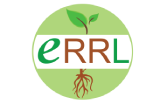ISO 11268-1 :
Soil quality — Effects of pollutants on earthworms — Part 1: Determination of acute toxicity to Eisenia fetida/Eisenia Andrei

ISO 11268, Part 1, presents a crucial method for evaluating soil quality by determining the acute toxicity of pollutants to Eisenia fetida/Eisenia andrei, commonly known as earthworms. This test method helps us understand how soil contaminants, biodegraded plastics and chemicals affect earthworms when absorbed through their skin or food intake. It is applicable to various soil types, including contaminated sites, amended soils, remediated soils, agricultural areas, and waste materials.
Acute Toxicity Assessment :
The primary goal of this method is to assess the acute toxicity of soil contaminants , biodegraded polymers and chemicals to Eisenia fetida/Eisenia andrei. By understanding how pollutants affect earthworms, we gain valuable insights into the habitat function of soils and potential ecological risks.
Test Substrate Selection :
Effects of substances are evaluated using a standard soil, preferably a defined artificial soil substrate. For contaminated soils, effects on survival are determined both in the test soil and a control soil. The control and dilution substrate (dilution series of contaminated soil) can be an uncontaminated soil (reference soil) or a standard soil, depending on the study’s objectives.
Versatile Testing Conditions :
This method provides guidance on testing chemicals under temperate and tropical conditions, making it adaptable to various environmental settings.
Evaluating the acute toxicity of soil contaminants to earthworms is crucial for environmental protection and sustainable land management. This method allows us to identify potential risks to earthworm populations and the overall health of soil ecosystems.
By utilizing this method, we gain valuable data to protect soil health, biodiversity, and the environment. It enables us to make informed decisions for responsible soil management and safeguarding terrestrial ecosystems.
